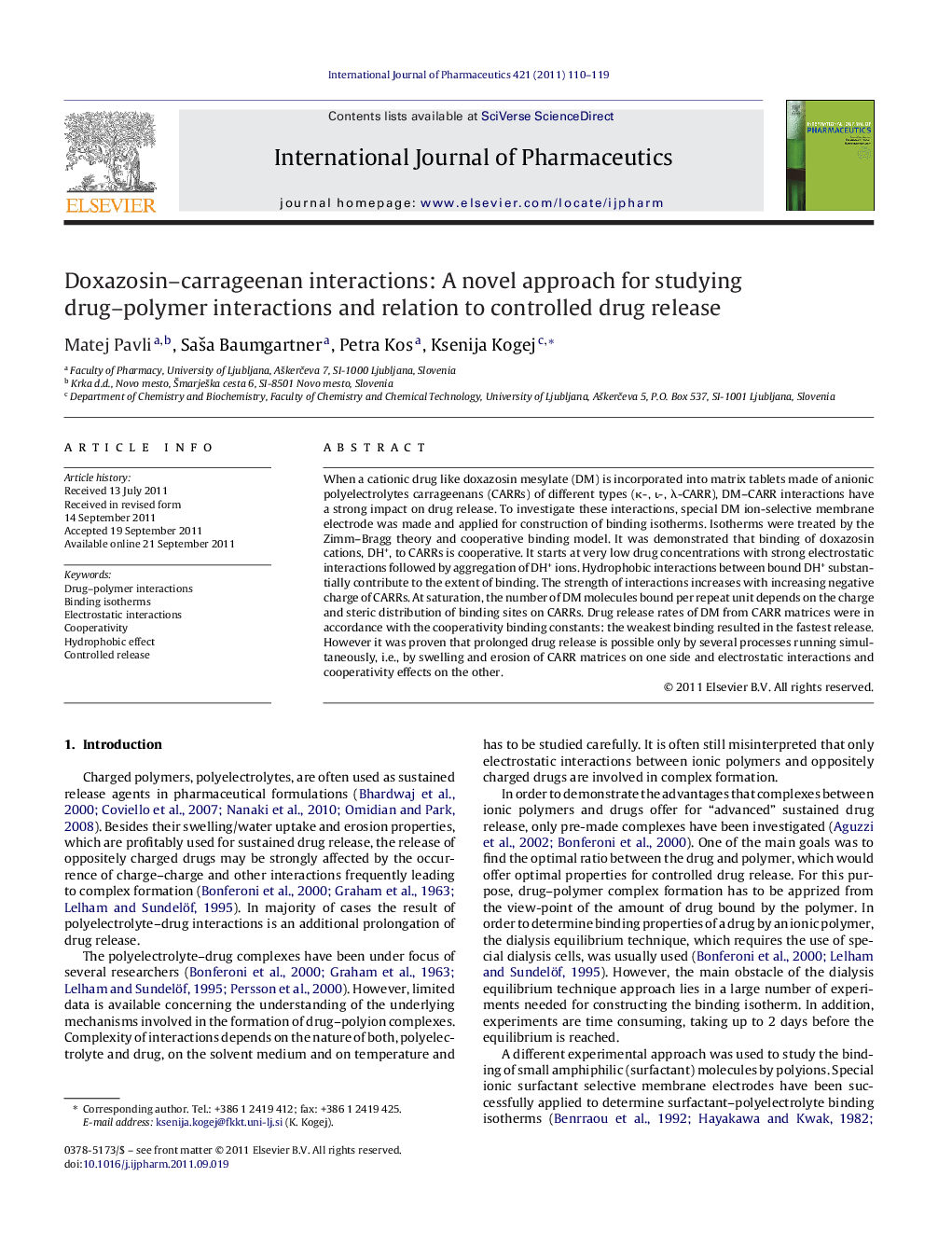| Article ID | Journal | Published Year | Pages | File Type |
|---|---|---|---|---|
| 5821217 | International Journal of Pharmaceutics | 2011 | 10 Pages |
When a cationic drug like doxazosin mesylate (DM) is incorporated into matrix tablets made of anionic polyelectrolytes carrageenans (CARRs) of different types (κ-, ι-, λ-CARR), DM-CARR interactions have a strong impact on drug release. To investigate these interactions, special DM ion-selective membrane electrode was made and applied for construction of binding isotherms. Isotherms were treated by the Zimm-Bragg theory and cooperative binding model. It was demonstrated that binding of doxazosin cations, DH+, to CARRs is cooperative. It starts at very low drug concentrations with strong electrostatic interactions followed by aggregation of DH+ ions. Hydrophobic interactions between bound DH+ substantially contribute to the extent of binding. The strength of interactions increases with increasing negative charge of CARRs. At saturation, the number of DM molecules bound per repeat unit depends on the charge and steric distribution of binding sites on CARRs. Drug release rates of DM from CARR matrices were in accordance with the cooperativity binding constants: the weakest binding resulted in the fastest release. However it was proven that prolonged drug release is possible only by several processes running simultaneously, i.e., by swelling and erosion of CARR matrices on one side and electrostatic interactions and cooperativity effects on the other.
Graphical abstractDownload high-res image (234KB)Download full-size image
